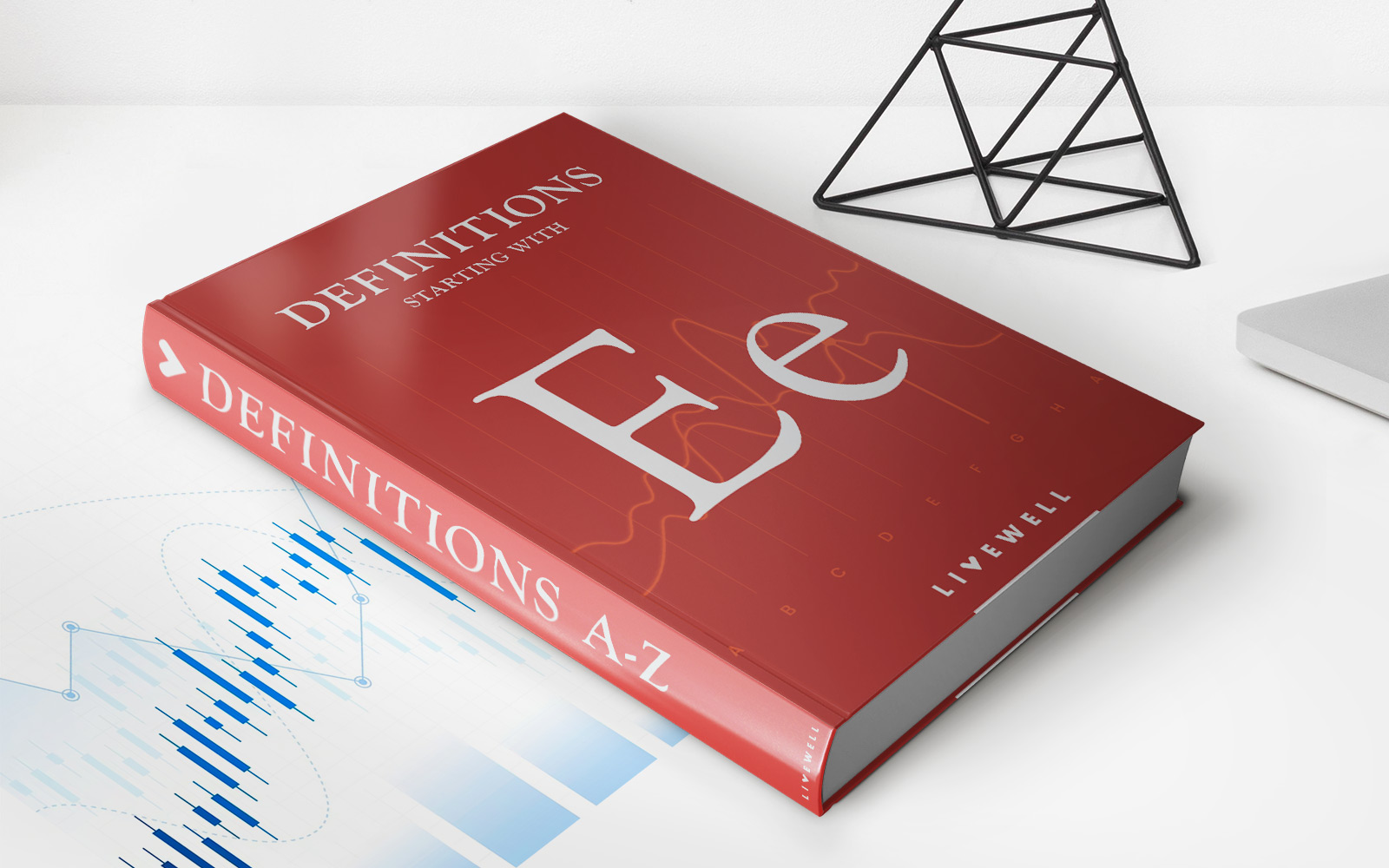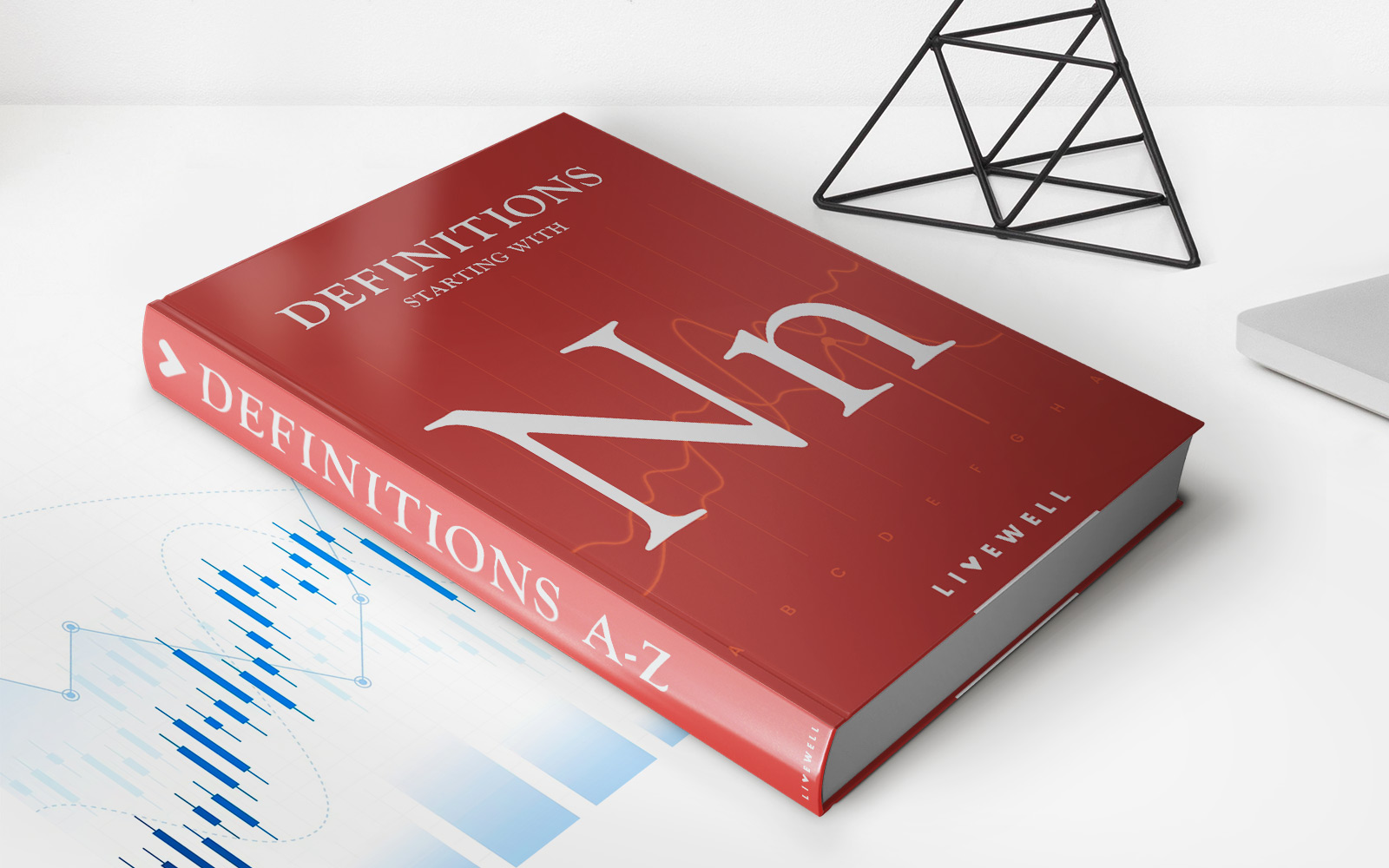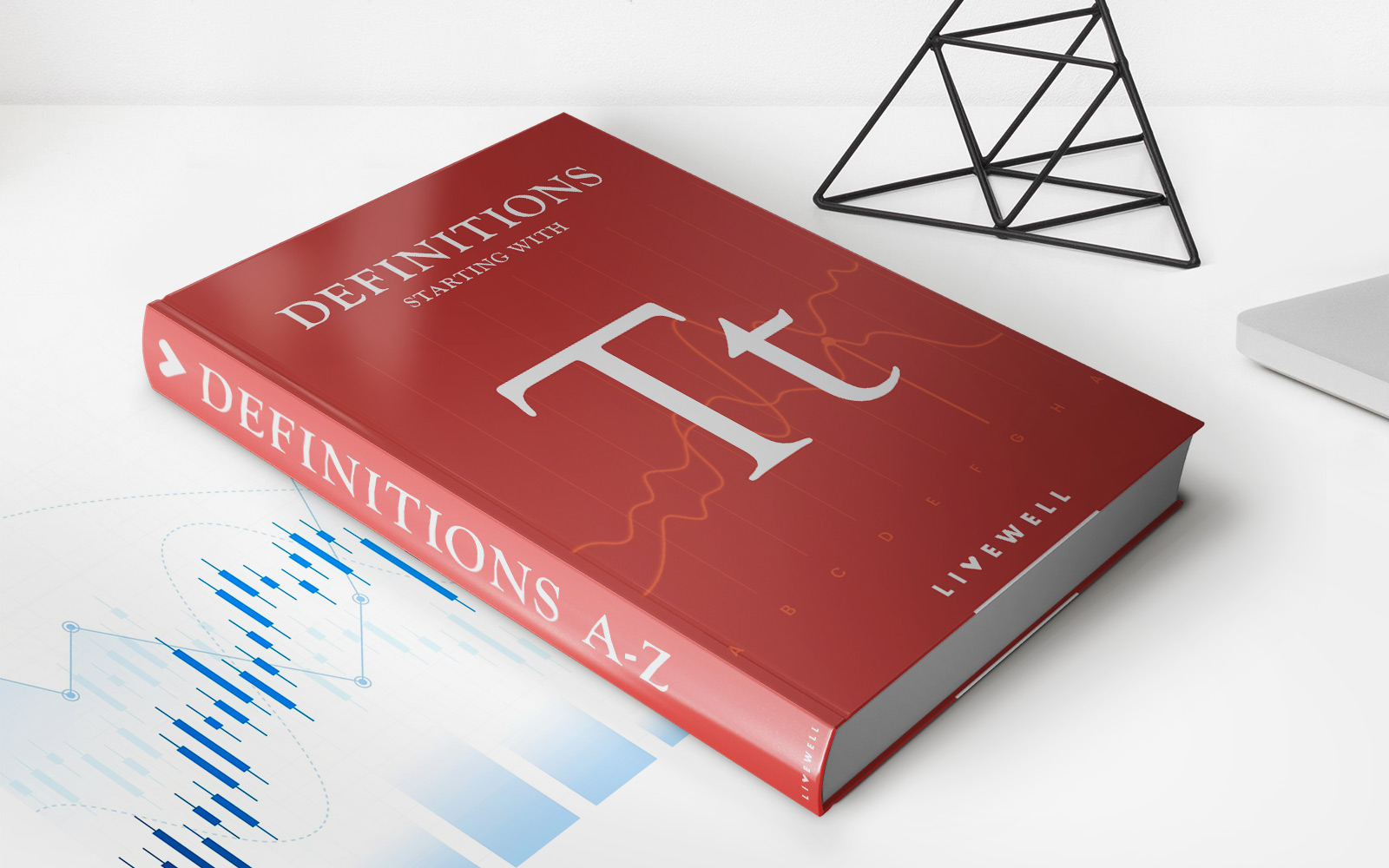

Finance
Where Is The Blockchain Stored
Published: October 23, 2023
Discover where the blockchain is stored and how it impacts the finance sector. Explore the secure and decentralized nature of this revolutionary technology.
(Many of the links in this article redirect to a specific reviewed product. Your purchase of these products through affiliate links helps to generate commission for LiveWell, at no extra cost. Learn more)
Table of Contents
Introduction
Welcome to the world of blockchain! In recent years, blockchain technology has been making waves across various industries, revolutionizing the way we store, verify, and transact data. But have you ever wondered where this innovative technology actually stores all the information?
In this article, we will delve into the fascinating world of blockchain storage and explore how this decentralized network securely stores and manages data. Whether you’re a curious individual wanting to understand the basics of blockchain or a finance professional looking for insights into its storage mechanisms, this article will provide you with the answers you seek.
But before we dive into the intricacies of blockchain storage, let’s quickly cover the basics.
At its core, blockchain is a decentralized, distributed ledger that maintains a permanent and tamper-proof record of all transactions in a network. Unlike traditional databases that are centrally stored and controlled, blockchain distributes information across multiple nodes or computers, ensuring transparency, immutability, and resilience.
The blockchain ledger consists of a chain of blocks, with each block containing a batch of transactions. Each block is linked to the previous one through a cryptographic hash, creating an unbreakable chain of records. The decentralized nature of blockchain means that no single entity has control over the entire network, making it highly secure and resistant to fraudulent activities.
Now that we have a basic understanding of blockchain, let’s explore where exactly this revolutionary technology stores all its data.
The Basics of Blockchain
Before we dive into the intricacies of blockchain storage, let’s first understand the fundamentals of blockchain technology.
At its core, blockchain is a decentralized, distributed ledger that records and verifies transactions across a network of computers. Unlike traditional centralized databases, where a single authority controls the data, blockchain relies on a consensus mechanism to validate and store information in a transparent and secure manner.
One of the key features of blockchain is its immutability. Once a transaction is recorded on the blockchain, it is nearly impossible to alter or delete. This makes blockchain highly resistant to fraud and tampering, making it a trusted and reliable technology for various applications.
Blockchain operates through a network of computers, known as nodes, that collaborate to validate and add new transactions to the ledger. To ensure the validity of transactions, blockchain uses cryptographic algorithms, such as hashing and digital signatures, to secure the data.
Another important concept in blockchain is the consensus mechanism. Consensus refers to the agreement among nodes on the validity of a transaction before it is added to the blockchain. There are various consensus mechanisms, such as Proof of Work (PoW) and Proof of Stake (PoS), each with its own unique way of reaching consensus.
Blockchain technology has gained significant popularity due to its potential to eliminate intermediaries and reduce costs. It has found applications in a wide range of industries, including finance, supply chain management, healthcare, and voting systems.
Now that we have a grasp on the basics of blockchain, let’s explore the fascinating world of blockchain storage.
Where Does Blockchain Store Data?
Blockchain, being a distributed ledger, requires a robust and secure storage system to hold all the transactional data. But where exactly does blockchain store this data? The answer lies in the distributed nature of the technology.
Unlike traditional databases where data is stored in a central location, blockchain distributes data across multiple nodes in the network. Each node maintains a copy of the entire blockchain ledger, ensuring redundancy and eliminating the risk of a single point of failure.
This distributed storage approach provides several benefits. Firstly, it enhances the security of the data. Since the information is replicated across multiple nodes, it becomes incredibly difficult for malicious actors to tamper with the data or launch a successful attack.
Secondly, distributed storage enhances the transparency and integrity of the data. Each node in the network verifies and validates the transactions independently, ensuring consensus and preventing any unauthorized changes to the ledger.
Additionally, blockchain data is stored in a sequential manner in blocks. These blocks contain a batch of transactions and are linked together through a cryptographic hash function. Each block stores the hash of the previous block, creating an unbreakable chain of records.
But what happens when the size of the blockchain grows significantly? Storing and maintaining a large amount of data can be resource-intensive and cumbersome. To address this, blockchain technology incorporates various storage models.
Let’s explore these storage models in more detail.
Distributed Ledger Technology
At the heart of blockchain technology lies the concept of distributed ledger. A distributed ledger is a database that is shared and synchronized across multiple nodes in a network. It allows for the decentralized and transparent storage and management of data.
One of the key advantages of a distributed ledger is its ability to eliminate the need for a central authority or intermediary to maintain and validate transactions. Instead, the ledger is updated and verified by a network of participants or nodes, each having a copy of the entire ledger.
This distributed nature of the ledger ensures transparency and immutability of the data. Each transaction recorded on the distributed ledger is validated by consensus among the nodes, making it nearly impossible for any fraudulent activity or tampering to go unnoticed.
Moreover, the decentralized nature of distributed ledger technology brings added security to the system. Since there is no central point of failure, it becomes incredibly difficult for malicious actors to manipulate or disrupt the data stored on the ledger.
Blockchain is a prime example of distributed ledger technology. It utilizes a peer-to-peer network of computers, each maintaining a copy of the blockchain ledger. This distributed storage and consensus mechanism ensure the integrity and reliability of the data.
However, it is important to note that not all distributed ledger technologies are blockchain-based. There are other frameworks, such as Directed Acyclic Graph (DAG) and Hashgraph, that also leverage the power of distributed ledger for storing and managing data.
Distributed ledger technology has the potential to revolutionize various industries by providing a secure and transparent method for recording and verifying transactions. Its applications extend beyond finance and can be used in supply chain management, healthcare, voting systems, and more.
Now that we have explored the basics of distributed ledger technology, let’s delve into the different storage models used by blockchain.
Blockchain Storage Models
Blockchain technology utilizes different storage models to handle the storage and management of data. These models determine how the blockchain network stores and organizes the information within its decentralized infrastructure.
There are primarily two storage models used by blockchain: storage on public networks and storage on private networks.
Blockchain Storage on Public Networks
In a public blockchain network, like Bitcoin and Ethereum, the entire blockchain ledger is stored across a vast network of nodes that anyone can join. Every participant has a copy of the complete blockchain, ensuring transparency and security.
Public blockchain storage can be categorized into two types: full nodes and light nodes.
Full nodes store a complete copy of the blockchain ledger, including every transaction and smart contract. They are responsible for validating and verifying all the transactions occurring on the network. However, running a full node requires significant storage capacity, as the blockchain continues to grow over time.
On the other hand, light nodes store only a part of the blockchain or rely on other full nodes for information. They do not store the entire blockchain but still participate in the validation of transactions, making them more lightweight and accessible.
Both full nodes and light nodes contribute to the security and decentralization of public blockchain networks, ensuring the integrity of the data stored within the blockchain.
Blockchain Storage on Private Networks
Private or permissioned blockchain networks, unlike public networks, restrict access to a select group of participants. These participants are granted permission to join the network and contribute to the validation and storage of data.
Storage in private blockchain networks can vary depending on the specific design and requirements of the network. In some cases, a centralized authority or organization may be responsible for maintaining and storing the blockchain data on dedicated servers or cloud infrastructure.
Private blockchain networks typically have lower storage requirements compared to their public counterparts, as access and participation are limited to a specific group of trusted entities. This centralized aspect of private blockchains allows for faster transaction processing and control over the network’s storage structure.
Additionally, some private blockchain networks may implement a hybrid storage model, combining elements of both public and private storage. This approach enables organizations to strike a balance between data transparency and security within their specific use cases.
Each storage model has its advantages and considerations, depending on the nature of the blockchain application and the requirements of the participants involved.
Now that we have explored the different storage models used by blockchain, let’s conclude our discussion on blockchain storage.
Blockchain Storage on Public Networks
In the world of blockchain technology, public networks play a vital role in maintaining a decentralized and transparent ledger. Public blockchain networks, such as Bitcoin and Ethereum, rely on a vast network of nodes to store and manage the blockchain data.
In a public blockchain network, the entire blockchain ledger is replicated and stored across multiple nodes that anyone can join. Each participant in the network has a copy of the complete blockchain, ensuring transparency and security.
Public blockchain storage can be categorized into two types, namely full nodes and light nodes.
Full nodes store a complete copy of the blockchain ledger, including every transaction and smart contract. They are responsible for validating and verifying all the transactions occurring on the network. Running a full node requires significant storage capacity, as the blockchain continues to grow over time.
These full nodes play a crucial role in maintaining the integrity and security of the blockchain network. By storing and validating each transaction, they ensure that the data on the blockchain is accurate and tamper-proof.
On the other hand, light nodes, also known as thin clients, do not store the entire blockchain. Instead, they rely on other full nodes for information. They only retain a portion of the blockchain necessary for their specific operations. Light nodes are more lightweight and accessible, making them suitable for devices with limited storage capacity, such as smartphones or IoT devices.
Both full nodes and light nodes contribute to the security and decentralization of public blockchain networks. Each node independently verifies and validates the transactions occurring on the network, ensuring consensus and preventing any unauthorized changes to the ledger.
Public blockchain networks provide several benefits, including transparency, immutability, and censorship resistance. Since anyone can participate and access the blockchain, it becomes difficult for any single entity to control or manipulate the data. This openness and decentralization make public blockchains highly resilient and suitable for applications that require trust and transparency.
However, public blockchain storage does come with challenges. As the blockchain grows in size with every new transaction, storing and maintaining the entire blockchain can become resource-intensive. This presents scalability issues, requiring robust infrastructure and storage solutions to handle the increasing demands of the network.
Despite these challenges, public blockchain networks have shown immense potential and have revolutionized various industries. They provide a transparent and secure way to store and transfer assets, manage supply chains, and execute smart contracts.
Now that we have explored blockchain storage on public networks, let’s move on to discussing storage on private blockchain networks.
Blockchain Storage on Private Networks
In contrast to public blockchain networks, private or permissioned blockchain networks have more restricted access, catering to a select group of participants. These networks offer increased privacy and control over the data stored on the blockchain.
In private blockchain networks, the storage of the blockchain data can vary depending on the specific design and requirements of the network. In some cases, a centralized authority or organization may be responsible for maintaining and storing the blockchain data on dedicated servers or cloud infrastructure.
This centralized approach allows for efficient management of storage resources and quicker transaction processing. With access limited to trusted participants, private blockchain networks can maintain a higher level of control over the storage structure and ensure data privacy.
While blockchain technology promotes decentralization, private blockchain networks may sacrifice some of the characteristics associated with public blockchains, such as transparency and censorship resistance. However, they offer unique benefits, such as faster transaction speeds, reduced storage requirements, and increased privacy for specific use cases.
Private blockchain storage can also adopt a hybrid model, combining elements of both public and private storage. In this approach, certain data may be stored on a public blockchain to ensure transparency and immutability, while sensitive or confidential data is stored on a private network for enhanced security and control.
Private blockchain networks are particularly relevant for industries that require strict control over data access and management. For example, financial institutions may implement private blockchains to securely handle sensitive customer financial information, adhering to regulatory requirements.
Additionally, private blockchain networks can facilitate seamless collaboration among trusted entities, such as supply chain partners or consortiums. Participants can securely share and update data on a shared blockchain, improving transparency, traceability, and efficiency.
Despite the controlled nature of private blockchain networks, they still benefit from the underlying technology’s characteristics, including immutability, transparency within the network, and the ability to execute smart contracts. These features enhance trust and streamline operations among participants.
Private blockchain storage solutions need to strike a balance between data privacy, security, and sufficient storage capacity. Depending on the specific use case and requirements, organizations may opt for on-premises storage solutions, cloud-based storage services, or a combination of both to ensure robust and reliable storage infrastructure.
Now that we have explored blockchain storage on private networks, let’s conclude our discussion on blockchain storage.
Conclusion
Blockchain technology has revolutionized the way we store, verify, and transact data. The decentralized nature of blockchain ensures transparency, security, and immutability of information, making it an ideal tool for various industries.
In this article, we explored the basics of blockchain technology and its distributed ledger system. We learned that blockchain stores data across multiple nodes, creating a robust and tamper-proof system. By utilizing cryptographic functions and consensus mechanisms, blockchain ensures the integrity and security of the stored data.
We also discussed the different storage models used by blockchain. Public blockchain networks, such as Bitcoin and Ethereum, distribute the entire blockchain ledger across a network of nodes, providing transparency and decentralization. Full nodes and light nodes play integral roles in maintaining the blockchain and validating transactions.
On the other hand, private blockchain networks restrict access to a select group of participants. These networks offer increased control and privacy over the stored data. Organizations can opt for a centralized storage approach or a hybrid model that combines public and private storage, depending on their specific needs.
Whether storing data on public or private blockchain networks, organizations must consider scalability, security, and privacy requirements. The size and growth of the blockchain, along with the storage infrastructure, play crucial roles in ensuring the smooth operation of the blockchain network.
Blockchain technology continues to evolve and find applications in multiple industries. It has the ability to streamline processes, enhance transparency, and improve security in sectors such as finance, supply chain management, healthcare, and more.
As we move forward, it is crucial to keep exploring and understanding the storage mechanisms of blockchain technology. By harnessing the potential of blockchain storage, we can unlock new opportunities, drive innovation, and revolutionize the way we handle and manage data.
In conclusion, blockchain storage offers a decentralized, transparent, and secure way to store data. It presents new possibilities and challenges, enabling organizations to transform and enhance their operations in our increasingly digital world.














